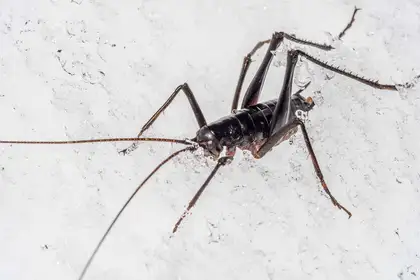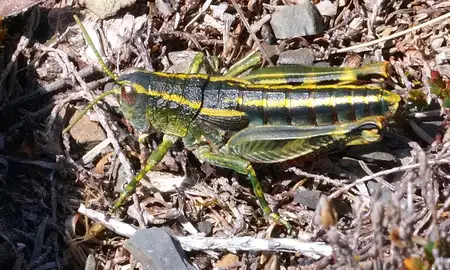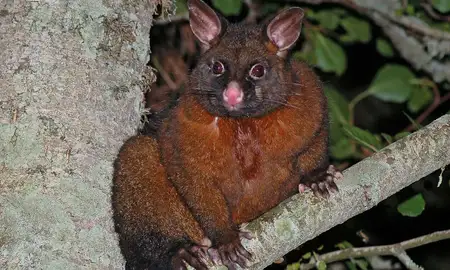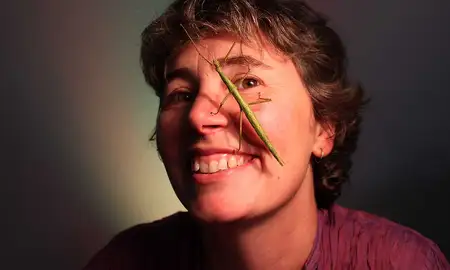
The newly discovered alpine wētā species Pharmacus cochleatus at Mount Edgar Thomas. Photo credit: Danilo Hegg
Six new species and three new subspecies of alpine cave wētā from the southern regions of the South Island have been identified.
Professors Steven Trewick and Mary Morgan-Richards from Massey University’s School of Natural Sciences announced their discoveries in a paper recently published in the European Journal of Taxonomy.
“This taxonomic [science of classification] work provides the basic information needed for us to understand the biodiversity of Aotearoa New Zealand, much of which remains unknown,” Professor Trewick says.
Understanding the biology of the alpine zone wētā have been limited by the rugged terrain, extreme climate and short summer seasons. Professor Trewick and Professor Morgan-Richards worked with alpine expert Danilo Hegg to locate the wētā in the high alpine of Ka Tiritiri-o-te-Moana, the Southern Alps of the South Island. These Pharmacus wētā, known as ‘alpine sorcerers’, were found above the tree-line in mountain ranges from the Nelson Lakes area to coastal Fiordland and Central Otago.
The alpine sorcerers live in rock crevices or holes under boulders above the treeline and up to 2800m above sea level. Here they survive in landscapes that are covered by snow for more than six months a year. They have evolved to survive freezing conditions, and can be active when it is very cold. They join an elite group of New Zealand insects that are freeze tolerant and this sets them apart from other cave wētā that live in more stable conditions.
“The New Zealand alpine zone is a critical environment with a rich biota that is found nowhere else in the world. Our analysis of climate change shows how vulnerable this system is and provides a warning of how conditions will change in other situations,” Professor Trewick says.
Further research by Professor Trewick and Professor Morgan-Richards with Massey University PhD graduate Dr Emily Koot, which was published in the Royal Society Open Science journal in March, has revealed that anthropogenic climate change will result in at least a quarter of New Zealand’s alpine species becoming extinct in the next 50 years.
“Climate heating rapidly reduces the available alpine habitat on our mountains. As the alpine zone shifts uphill it gradually squeezes species toward extinction,” Professor Trewick says.

Professor Mary Morgan-Richards and Professor Steven Trewick.
Related news
Grasshoppers show how alpine fauna will be lost as global temperatures rise
New research indicates anthropogenic climate change will result in a quarter of Aotearoa New Zealand's alpine grasshopper species becoming extinct.

Brushing up on possums
A Massey University study has investigated the unrestricted gene flow between two subspecies of translocated brushtail possums in Aotearoa New Zealand. The findings are significant to New Zealand's goal of being predator free by 2050.

First male of NZ stick insect species found in UK
The first male of a New Zealand stick insect species has been discovered, but not where researchers expected.
